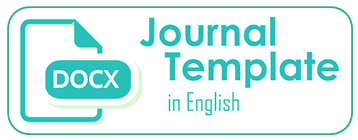Challenges in Enforcing License Revocation for Companies Violating Employment Laws: Legal, Financial, and Operational Perspectives
Keywords:
License Revocation, Employment Law Violations, Regulatory Enforcement, Corporate Governance, Legal FrameworkAbstract
This research examines the challenges faced by regulatory bodies in enforcing license revocation for companies that violate employment laws. Despite the critical role of license revocation in ensuring compliance and protecting workers' rights, regulatory bodies often encounter significant barriers, including legal ambiguities, resource constraints, corporate resistance, political pressures, and complications arising from globalization. The primary objective of this study is to investigate these challenges and assess their impact on the effectiveness of license revocation enforcement. Using a qualitative approach, this research analyzes case studies, interviews with regulatory authorities, and a review of relevant legal frameworks. The findings reveal that unclear legal standards, insufficient resources, and external pressures significantly hinder enforcement efforts, allowing some companies to evade penalties. The study concludes that regulatory bodies need clearer legal frameworks, more resources, and stronger public support to enhance enforcement. This research contributes to a deeper understanding of the obstacles in labor law enforcement and offers insights for future policy improvements and cross-border regulatory collaboration.
References
Alexander, K. (2009). Economic sanctions. Law and Public Policy. Houndmills, Basingstoke, Hampshire [England]: Palgrave Macmillan, 359.
Bernhardt, A., Milkman, R., Theodore, N., Heckathorn, D. D., Auer, M., DeFilippis, J., González, A. L., Narro, V., & Perelshteyn, J. (2009). Broken laws, unprotected workers: Violations of employment and labor laws in America’s cities.
Blevins, J. (2017). License to Uber: Using Administrative Law to Fix Occupational Licensing. UCLA L. Rev., 64, 844.
Boyacioglu, M. A., Kara, Y., & Baykan, Ö. K. (2009). Predicting bank financial failures using neural networks, support vector machines and multivariate statistical methods: A comparative analysis in the sample of savings deposit insurance fund (SDIF) transferred banks in Turkey. Expert Systems with Applications, 36(2), 3355–3366.
Collins, H. (2010). Employment law. Oxford University Press.
Estlund, C. (2005). Rebuilding the Law of the Workplace in an Era of Self-Regulation. Colum. L. Rev., 105, 319.
Eysenbach, G., & Till, J. E. (2001). Ethical issues in qualitative research on internet communities. Bmj, 323(7321), 1103–1105.
Fairman, R., & Yapp, C. (2005). Enforced self‐regulation, prescription, and conceptions of compliance within small businesses: The impact of enforcement. Law & Policy, 27(4), 491–519.
Frawley, S. (2018). The decision to comply with workplace law: A mixed-methods investigation of human resource practitioners.
Fredman, S. (2013). Anti-discrimination laws and work in the developing world: A thematic overview. World Bank.
Grimshaw, J. M., Eccles, M. P., Lavis, J. N., Hill, S. J., & Squires, J. E. (2012). Knowledge translation of research findings. Implementation Science, 7, 1–17.
Guest, G., MacQueen, K. M., & Namey, E. E. (2011). Applied thematic analysis. sage publications.
Gunningham, N., Kagan, R. A., & Thornton, D. (2004). Social license and environmental protection: why businesses go beyond compliance. Law & Social Inquiry, 29(2), 307–341.
Hassel, A. (2008). The evolution of a global labor governance regime. Governance, 21(2), 231–251.
Jacobs, S., & Cordova, C. (2005). Good Practices for regulatory inspections: Guidelines for reformers. Report Prepared for World Bank Group, Small and Medium Enterprise Department, Washington, DC. Https://Bit. Ly/2QBJ4Q7.
Johnston, M. P. (2014). Secondary data analysis: A method of which the time has come. Qualitative and Quantitative Methods in Libraries, 3(3), 619–626.
Jung, J., & Makowsky, M. D. (2014). The determinants of federal and state enforcement of workplace safety regulations: OSHA inspections 1990–2010. Journal of Regulatory Economics, 45, 1–33.
Liamputtong, P. (2006). Researching the vulnerable: A guide to sensitive research methods. Researching the Vulnerable, 1–256.
Malloy, T. F. (2003). Regulation, compliance and the firm. Temp. L. Rev., 76, 451.
Nardi, P. M. (2018). Doing survey research: A guide to quantitative methods. Routledge.
Nelson, C. (2008). Judicial review of legislative purpose. NYUL Rev., 83, 1784.
O’Rourke, D. (2003). Outsourcing regulation: Analyzing nongovernmental systems of labor standards and monitoring. Policy Studies Journal, 31(1), 1–29.
Pentheroudakis, C., & Baron, J. (2017). Licensing terms of standard essential patents: A comprehensive analysis of cases. JRC Science for Policy Report.
Protection, S. E. (2006). Precarious Employment and the Law’s Flaws: Identifying Regulatory Failure and Securing Effective Protection for Workers.
Tricker, R. I. (2015). Corporate governance: Principles, policies, and practices. Oxford University Press, USA.
Downloads
Published
Issue
Section
License
Copyright (c) 2025 Fauzi Zalmi, Ghandy Ghandy, Bobby Hidayat

This work is licensed under a Creative Commons Attribution-ShareAlike 4.0 International License.



